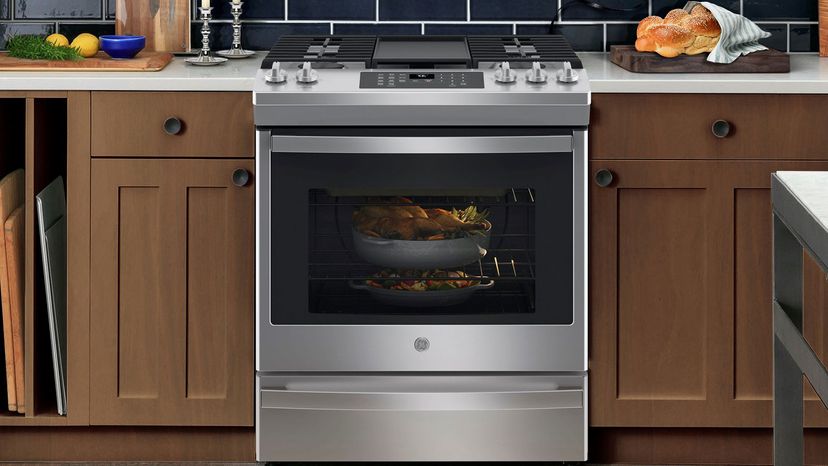
Ovens get dirty: Roasting meat spatters; lasagna overflows; pies drip. Soon you have a black, petrified crust coating the inside of your appliance. Globs of fat are bad -- fossilized sugars are even worse. Ordinary oven cleaning forces you to get down on your knees and scrub like mad. Alternatively, you can saturate the stains with toxic chemicals and hope for the best. What's a body to do?
Way back in 1963, General Electric came up with a solution: the self-cleaning oven. The company's innovative P7 model introduced the pyrolytic cleaning method [source: GE Appliances]. That was a fancy name for heating the residue until it carbonized and turned to ash. The oven included extra thermodynamic controls to allow it to reach the high temperatures needed. Today, another option is the steam-cleaning oven, which loosens dirt without resorting to extremes of heat.
Advertisement
Self-cleaning is a slight exaggeration -- you still need to get involved. You'll want to remove any drippings or build-up that come off easily before turning on the self-cleaning cycle in order to reduce smoke and fumes. And no matter which self-cleaning method you choose, you'll need to wipe up the residue when the cleaning cycle is over.
As you can imagine, the heat needed for the self-clean cycle requires a lot of energy. The ovens can also give off a smell like barbecued roadkill, especially while burning off thick layers of grime. And the fumes they emit can be toxic to pet birds.
But for the most part, self-cleaning ovens are a boon for anyone who bakes. They let you toss out your chemical cleaners. They clean the whole oven, even those hard-to-reach areas, without excess elbow grease. As a bonus, pyrolytic ovens save energy during normal baking because of the extra insulation that's added to contain the high heat.
In the next section, you'll open the oven door and take a look at how the different types of self-cleaning mechanisms work.

